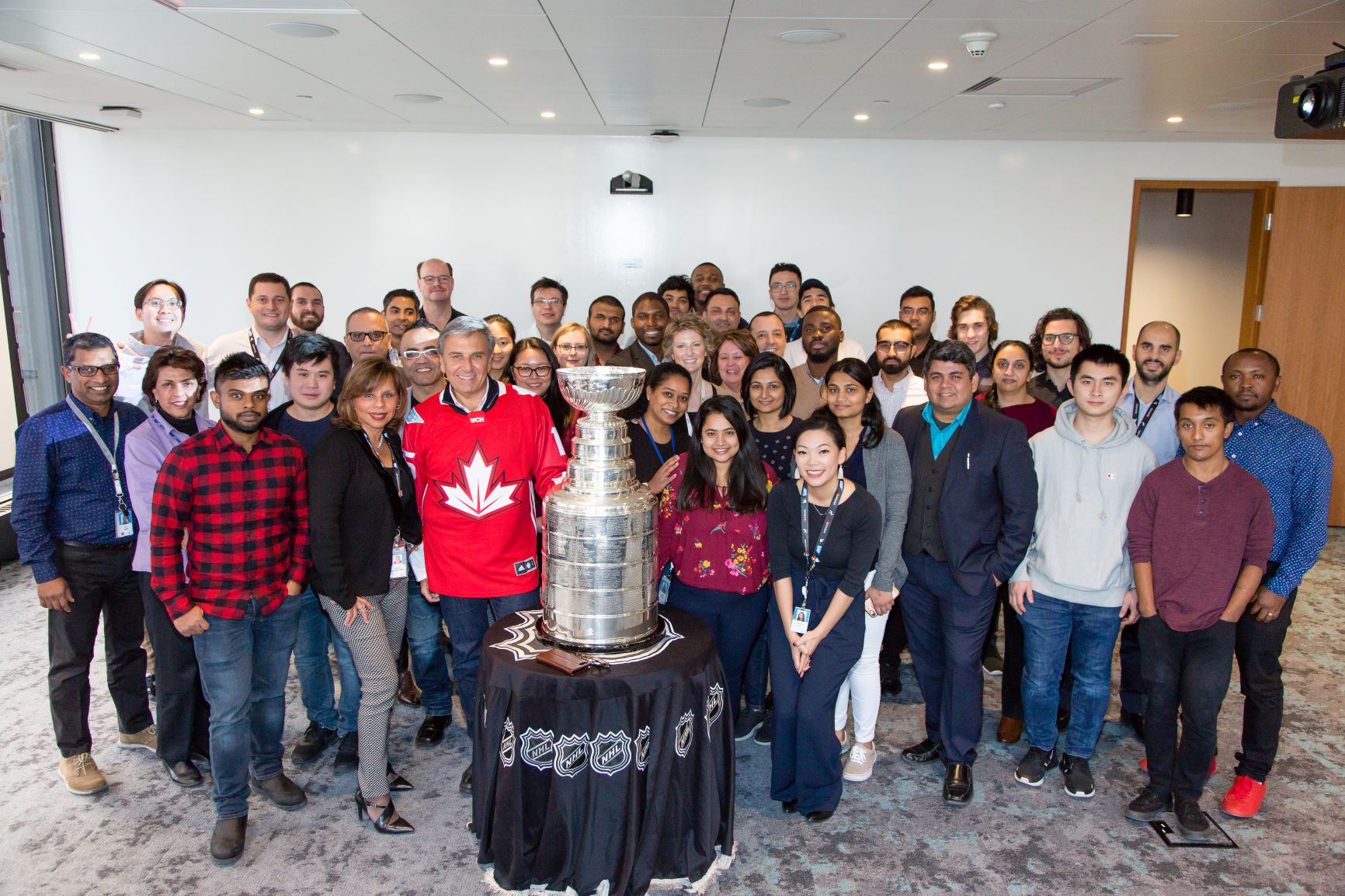 Support employees in the Toronto office on my recent visit. Bonus: the NHL Stanley Cup!
Support employees in the Toronto office on my recent visit. Bonus: the NHL Stanley Cup!
As 2018 comes to an end, I’ve taken some time to reflect on a busy, challenging and extremely exciting year.
Everywhere I’ve gone, I’m often asked what it’s like to manage close to 3,000 people.
How does one manage such a large group – across various locations and cultures – and ensure everyone is engaged and understands how their role impacts the larger vision?
In all honesty, it’s extremely challenging and is something I think about every day. There is no silver bullet, but I have learned a couple of key lessons throughout my career and especially during this year:
Make time for face time
I travel a lot and believe in face time. That means looking people in the eye and shaking their hand because it goes a long way. Plus, once you get that in-person time, it’s important to frame your message in a way that’s relevant to who you’re talking to. Whether I’m meeting with a support engineer, product manager or first line manager, I try to talk in their language and explain our vision in their terms. In an era of fast paced change, l always need to be able to answer the “What’s in it for me?” question, no matter who’s asking it.
This year, I’ve made it a mission to visit every major support office within SAP—even my colleagues dubbed this “Mohammed’s World Tour”. It sounds like I’m hosting concerts worldwide and in a way, it is just that. Product Support colleagues band together when I’m there but the most rewarding part of this? I got to meet (almost) everyone face-to-face. This really helped me understand the needs and concerns of the people within my organization.
Customize approach by culture
I can’t emphasize enough how important it is to recognize cultural differences across regions. We can’t assume that every region works identically – and in our case, we can’t expect that everyone defines the term “improved customer experience” in the same way.
For example, in North America and Europe, calling the customer more frequently to discuss issues and overall experience is viewed more positively than merely updating a ticket with information. The real-time call adds a personal touch for the customer and shows them how invested you are in their experience. However, this same approach can’t be duplicated in China or India, as they prefer the written communication as they might be uncomfortable talking over the phone due to language barriers.
Engage digitally
Even though traditional face time is crucial, technology offers a plethora of opportunities to stay connected with your team in between those in-person meetings. I stay active in internal groups and forums as this allows me to keep a pulse on how my large team is feeling and what they’re thinking about.
We recently did an employee survey and many of the employees’ sentiments come as no surprise to me. Before they’re telling me what the leadership needs to work on, I make sure I’m aware of the issues they’re concerned about before they become too big to tackle easily.
I also try to share as much as I can through blogs (like this) and comment, so that my team continually hears from me and understands how our vision is evolving and becoming a reality.
Ultimately, we must never forget the human element in what we do. When it comes to management, we’re not just talking about a name and title but about creating a tightly integrated support community. And when it comes to customer experience, we can’t forget there’s a human on the other end that is looking for the most efficient way to do business.
To the global managers out there, what leadership lessons do you live by? And for others, what qualities do you appreciate in a leader?
